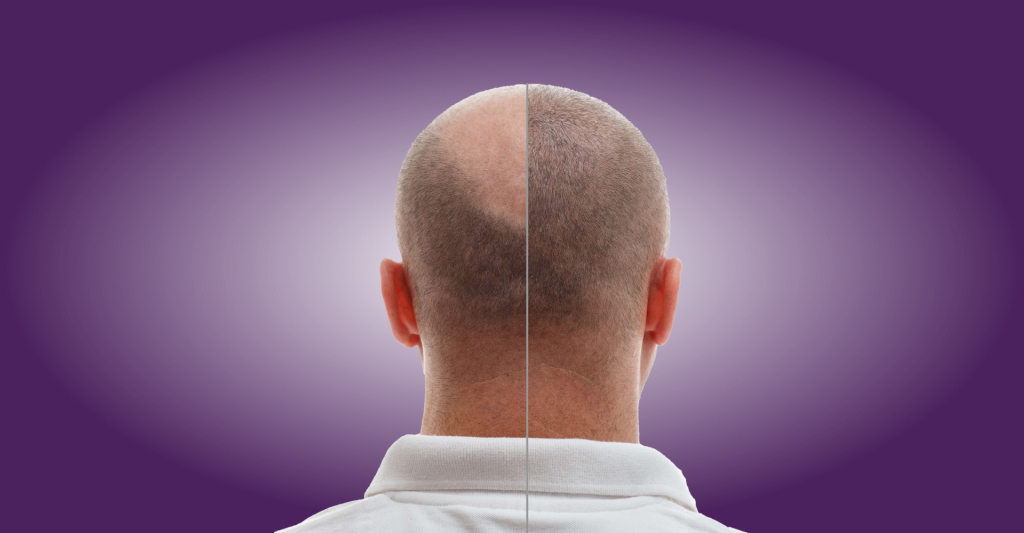Hair loss treatment is a billion-dollar industry worldwide, but how are you able to tell which services work and which don’t? We compared the highest hair loss treatment providers in similar industries.
How did we analyze the simplest hair loss treatment providers for male and feminine hair loss options?
Sashaluxe is a dermatology and cosmetic surgery center that focuses on men’s and women’s skin and hair care wellness services majorly. Sashaluxe provides tested and proven hair loss treatments approved by the FDA.
Sashaluxe specifically offers hair regrowth services like
Growth Factor Concentrate
Growth factors have long been suggested as one of the major effective treatments for hair loss and wrinkles. Among the various factors contributing to hair loss and skin damage, the foremost ones are hormonal imbalance, genetic conditions, poor nutrition, and stress. major standard treatments are topical or oral medicines that are challenged by side effects and limited patient adherence.
There is a powerful need for additional treatment methods for promoting hair growth and skin health. The GFC fills this void perfectly.
What does the growth factor concentrate?
GFC is a highly concentrated procedure made up of the patient’s own blood for treating hair loss and has enormous skin rejuvenation benefits.
Platelets hold a range of growth factors (types of cells in our blood). Certified Doctors and Therapists are able to extract these GFC in specially developed kits from a person’s own blood. This GFC is injected into the scalp and skin (facial and neck), delivering a high concentration of a person’s own growth factors directly into the layers of skin. As a result, regeneration and repair are stimulated.
Mesotherapy
Although there’s plenty of discussion about medical therapies like mesotherapy, there aren’t plenty of individuals who actually know what these terms actually mean.
Mesotherapy is a method first invented in 1948 by Frenchman Michael Pistor, derives its name from the mesoderm.
The mesoderm is a layer of the human skin that’s composed mainly of fat cells. The layer sits right beneath the surface of the skin. When the procedure was introduced, it was thought that it’d help reduce bulges caused by excess fat and cellulite.
What is Mesotherapy?
Mesotherapy is truly a non-invasive method during which microinjections are administered right below the epidermis. The thought behind the therapy is that it will stimulate the mesoderm, which successively will help alleviate a range of medical conditions.
The solution that is injected into the mesoderm is a combination of several ingredients, and therefore the combination will vary from person to person, because it will be customized. However, there will be minerals, vitamins, amino and nucleic acids, also as co-enzymes in this medical cocktail.
What can Mesotherapy be used for?
Mesotherapy was originally designed to handle and reduce excess weight, but today it is being extensively used to battle hair loss. Tests and studies have shown that not only can it delay pattern baldness, but it can even help with the regrowth of hair.
The Treatment Procedure
Mesotherapy is not just chemical or physical – it is a mixture of both. Areas must be demarcated on the scalp beforehand, and a special blend of vitamins, minerals, and amino acids is injected into the mesoderm. The chemical cocktail works like a bullet, hitting the nail on its head.
The actual procedure takes only about 15 to 30 minutes, depending on the area that has to be covered. In most cases, at least ten sessions are required, and the same has to be spaced out. While the first sessions need to be every two weeks, the subsequent ones can be spaced over two to three months. You will also need to undergo maintenance treatments every so often to make sure that your hair continues to look great.
How it Really Works and Helps?
It is important to understand that facial hair features such as mustaches, beards, and eyebrows are a part of what constitutes a face. People can notice it immediately when there is hair thinning, irregular facial hair shaping, or loss of hair due to an accident.
Advanced PRP
PRP for Hair Loss Treatment
Hair loss can be devastating to the millions of men and women who suffer from male-pattern or female-pattern baldness. Platelet Rich Plasma (“PRP”) is a breakthrough in hair loss treatment and one of the newest trends in hair regrowth. PRP therapy began in the 1980s, and doctors have recently begun utilizing it for hair restoration. Our clients have experienced promising results, and the popularity of the procedure has expanded quickly.
PRP for hair loss is a non-surgical procedure that utilizes plasma from the patient’s own blood to trigger the growth of hair. The plasma is rich in growth factors, which work like messengers to restore tissue damage. The plasma is injected across the scalp to improve nutrition to the scalp and correct damaged hair follicles. The injections trigger natural hair growth and can help maintain its growth by improving the blood supply to the hair follicle itself. This can encourage increased thickness in the hair shaft. Any individual suffering from hair loss is a good candidate for platelet-rich plasma for hair growth, although those with early hair loss tend to see the best results.
What is PRP for Hair Loss Treatment?
PRP, or Platelet-Rich Plasma Therapy, utilizes concentrated blood plasma, derived from the patient’s whole blood. It contains a concentration of growth factors and cytokines that stimulate healing and rejuvenation. The pain-free injections are administered directly to the impacted area in relatively short treatment sessions, and for additional comfort, numbing agents are available. Treatments are usually performed once a month for the first three-to-four months. After this initial period, they occur every three to six months, depending on the individual’s response and results. Once this treatment protocol is concluded, results can be seen within two-to-three months.
Hair Transplant
A hair transplant is a procedure in which a plastic or dermatological surgeon moves hair to a bald area of the head. The surgeon usually moves hair from the back or side of the head to the front or top of the head.
Hair transplants typically occur in a medical office under local anaesthesia.
Pattern baldness is responsible for the majority of hair loss. This comes down to genetics. The remaining cases are due to a variety of factors, including:
There are two types of transplant procedures: Slit grafts and Micrografts. Slit grafts contain 4 to 10 hairs per graft. Micrografts contain 1 to 2 hairs per graft, depending on the amount of coverage needed.
Receiving a hair transplant can improve your appearance and self-confidence. Good candidates for a hair transplant include:
Hair replacement isn’t a good option for:
After thoroughly cleaning your scalp, the surgeon uses a small needle to numb an area of your head with local anaesthesia.
Two main techniques are used to obtain follicles for transplantation:
- FUT: In follicular unit transplantation (FUT)
- FUE: In follicular unit extraction (FUE)
The hair follicles are cut out directly from the back of the head through hundreds to thousands of tiny punch incisions.
A hair transplant session can take four hours or more.
- Your stitches will be removed about 10 days after surgery.
- You may require up to three or four sessions to achieve the full head of hair you desire. Sessions occur several months apart to allow each transplant to fully heal.
- Your scalp may be sore and
- You may need to take medications following hair transplant surgery, such as:
- Most people can return to work several days after surgery.
It’s normal for the transplanted hair to fall out two to three weeks after the procedure. This makes way for new hair growth. Most people will see some new hair growth 8 to 12 months after surgery.
Many doctors prescribe minoxidil (Rogaine) or the hair growth medication finasteride (Propecia) to improve hair regrowth. These medications also help slow or stop future hair loss.
Typically, people who’ve had a hair transplant will continue to grow hair in the transplanted areas of their scalp.
The new hair may appear more or less dense depending on:
If you don’t take medication (such as minoxidil or finasteride) or undergo a low level of laser therapy, you may continue to experience hair loss in non-treated areas of your scalp.
It’s important to discuss the expected outcome with your surgeon and develop realistic expectations.
Many people experience hair loss at some point in their lives. Medication is an effective treatment option. Here’s all you need to know about where to…
Hair grows back at a rate of 6 inches per year, but the rate at which it returns after hair loss depends on what caused the loss.
Conclusion
Hair may regrow without treatment. When it doesn’t, a dermatologist may include one or more of these options in your treatment plan. The key to treating hair loss is to find out what’s causing it. Here’s how a dermatologist determines the cause and what treatment may be involved. When faced with hair loss, many people aren’t sure where to turn for help. Find out what you can do. Discover the signs of this common cause of hair loss and what can be done to treat it. Due to this one advancement, it’s now possible to get natural-looking results from a hair transplant. See what’s possible for men and women.













